Reasons to be dazzled by tuna skin
Summary:
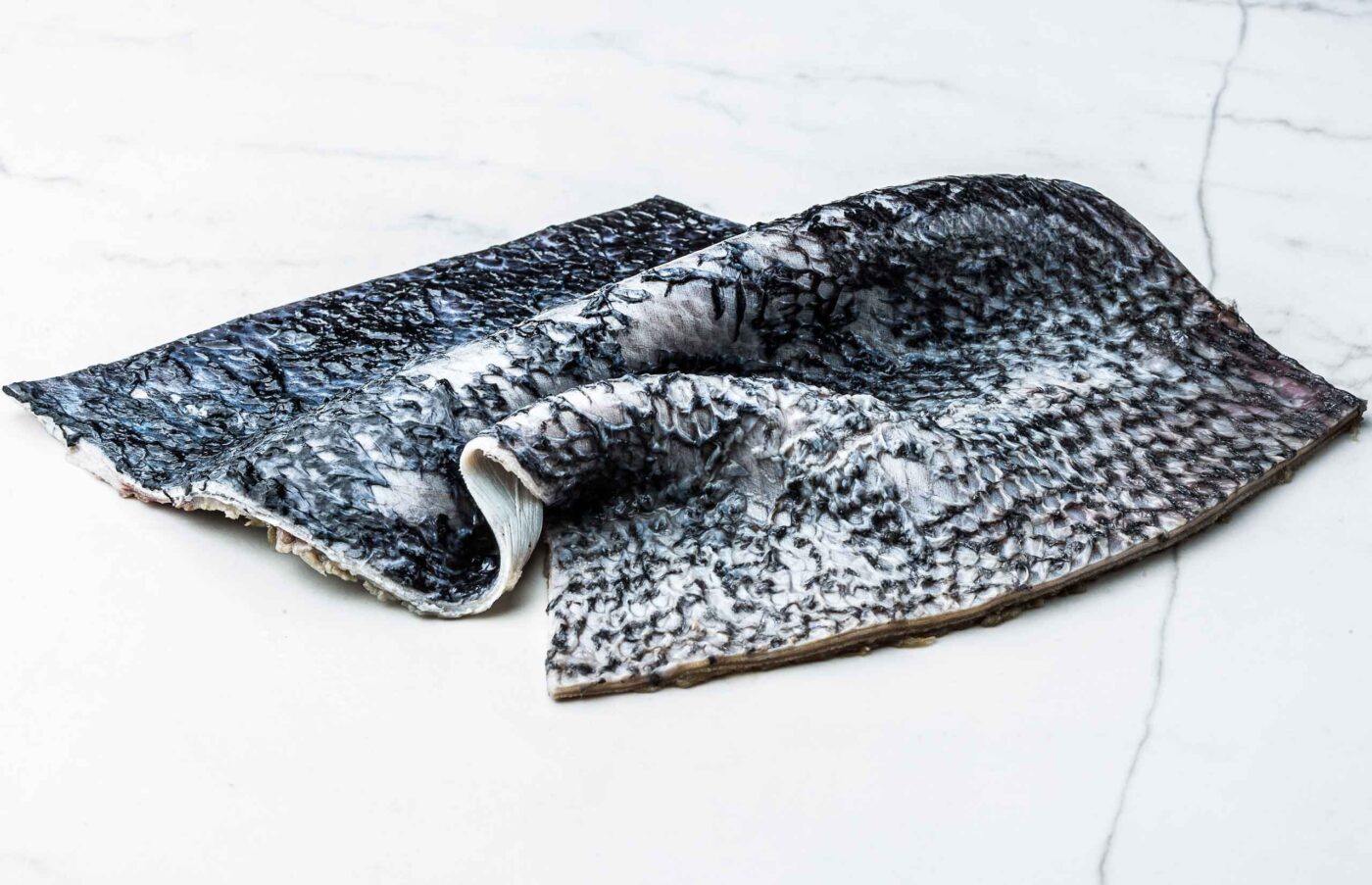
A logbook by Sensei Hiroshi Umi.
Forget the stereotypes. Do not imagine that because I was born in Osaka and raised in discipline, brought up on cast iron regulations, maintaining silence and balanced containment, my Japanese heart cannot leap with emotion. Every time I see The English Patient my reason melts into emotion, and my pulse races like a child stealing sweets. In particular at that sequence when the aeroplane caresses the dunes of the desert in a legendary overhead travelling shot. Sinuous, curved, dramatic. Offering up their shadows and their mystery of monotony and peace. An utterly beautiful desert, convex and concave as the curves of the woman loved by the protagonist (a monumental and scorched Ralph Fiennes).
So why this cinematic reference, this tribute? Because the aesthetics of the sea and the desert resemble one another. And the skin of the tuna is like the surface of the ocean. Sometimes the deepest black, the blue azure of the cosmos; always fascinating, scaled like the waves of a windswept sea. And that delicate skin is now attracting the attention of chefs who breakfast on innovation.
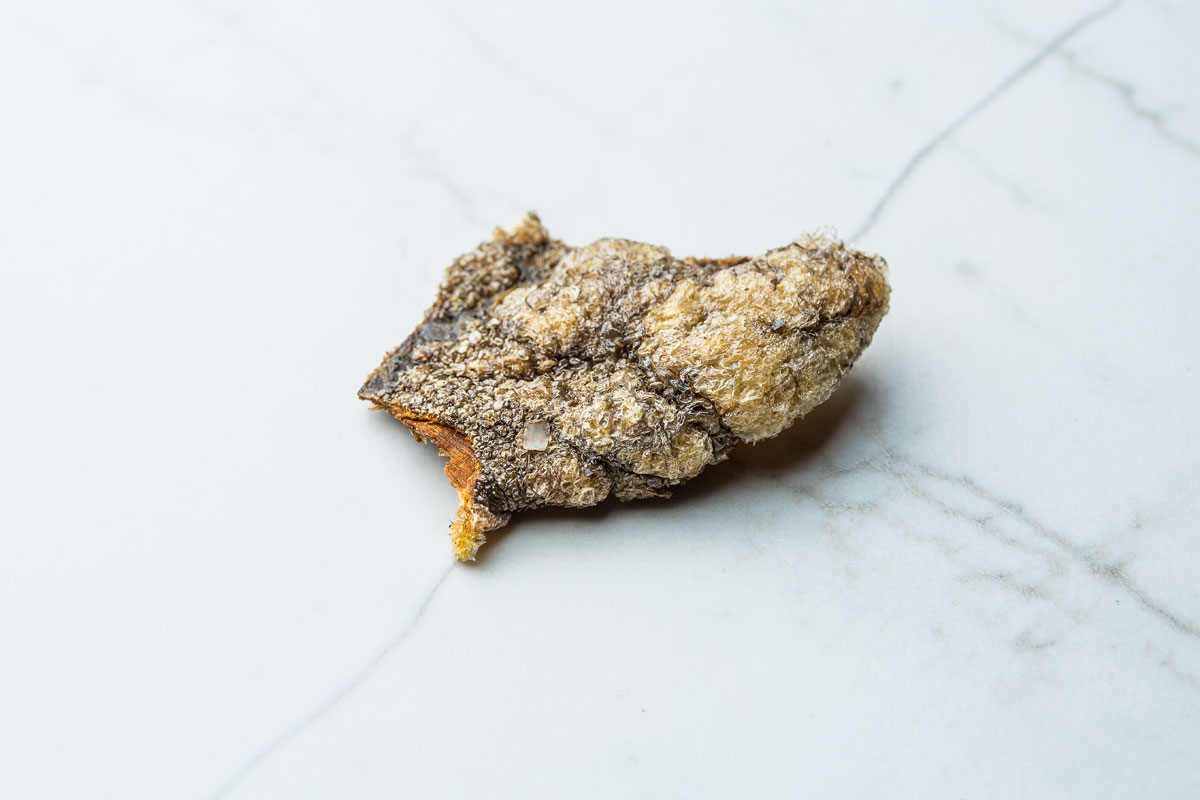
From blue to silver: the colour range of the tuna’s skin.
Let us begin with the biological part, as intriguing as a Sunday pastime. From a very young age I noticed in my home town’s fish market the shading of the intensely dark blue back, contrasting with and fading into the greys and whitish tones closer to the belly, as I was told. “There is a very clear reason for this coloration: it is the camouflage they seek and need; bluish tones on the top, more silvery on the belly. When you look at them from directly overhead, with the sea a little choppy from the wind as they swirl around in a shoal, you can’t see them. When they head off to spawn they gather in larger schools and are more visible. They stream through the Straits in scattered formations, but when they reach the waters of the Balearics and Sicily, they join up and the schools are clearly distinguishable. The blue of their back is similar to the blue of the sea. It plays on the sunlight to make it harder for predators to spot them, in other words, any killer whales that might be swimming around,” explains Antonio Belmonte, biologist for the Fuentes tuna brand.
The scales covering this great body, which can tip the scales at over 300 kilos, are small and smooth to the touch but lubricated with a somewhat viscous substance which reduces friction in the water (a marvel of hydrodynamics), like well-waxed skis. Which means that our esteemed bluefins can dodge hazards with the flick of a fin, dribbling like Maradona and reaching speeds of almost 70 km/h in a flash, thanks to their missile-shaped anatomy.
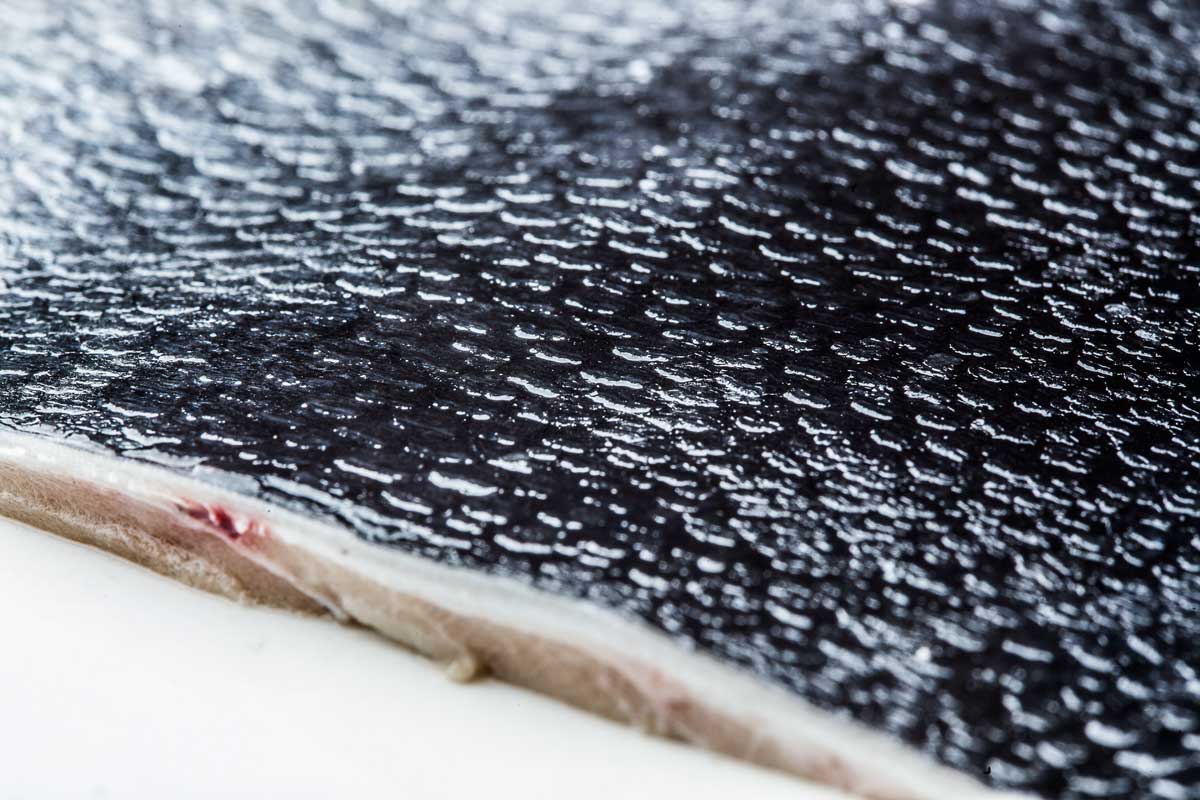
The secure but hugely delicate skin of the tuna
Nonetheless, a tuna’s skin suffers wear and tear. Very much so. When the fish are trapped by a net, in fact, some of them will begin to rub against the ropes, causing marks that look like bruised indentations on their natural wetsuit. These wound-like grooves will remain with them, as the animal lives in the water and cannot regenerate its tissues. Its skin will otherwise normally remain immaculate, lubricated, strong and sensitive throughout its life. The sign of a peaceful, happy existence. For those keen on similes, the tuna’s skin is like parachute silk. Secure but hugely delicate. If the fabric is well cared for, the volume of air gathered within allows you to fall like a feather, safe and sound. It is, though, as sensitive as a baby’s cheek: you could rip it with a fingernail. A striking paradox.
Very few would ever have the chance to touch the texture of a live tuna in its natural setting. To do so you would have to dive into the fish farm and remain completely still and quiet for countless minutes. Once they have grown used to your presence, you might have the privilege for an unforgettable instant of stroking this prodigious sheath concealing the titanic musculature beneath. With the Rock of Gibraltar in sight, they must be swift and precise to avoid the teeth of the killer whales lying in wait. One bite and they would bleed to death in minutes.
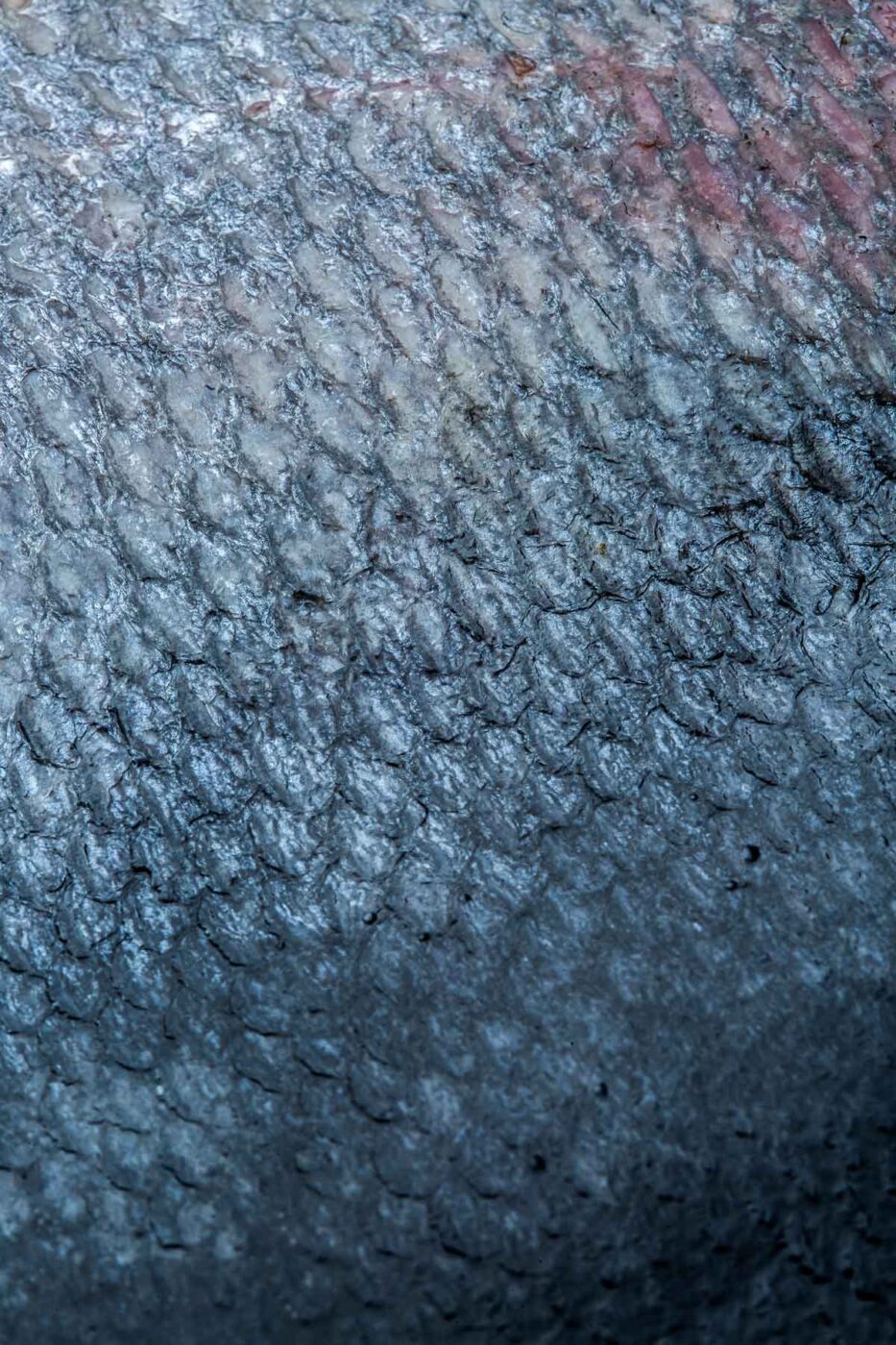
Sought after by the most innovative chefs
And what of culinary vocation, with bellies, loins and saku always to the fore? Well, there is plenty of room for creativity. I recall skin cooked in the style of tripe by the peerless Ángel León. As well as a snack of crunchy, puffed skin served by the great Pablo González (La Cabaña), whose tuna adventures we will duly cover in future editions (such a joy to visit his Laboratory in El Palmar, Murcia).
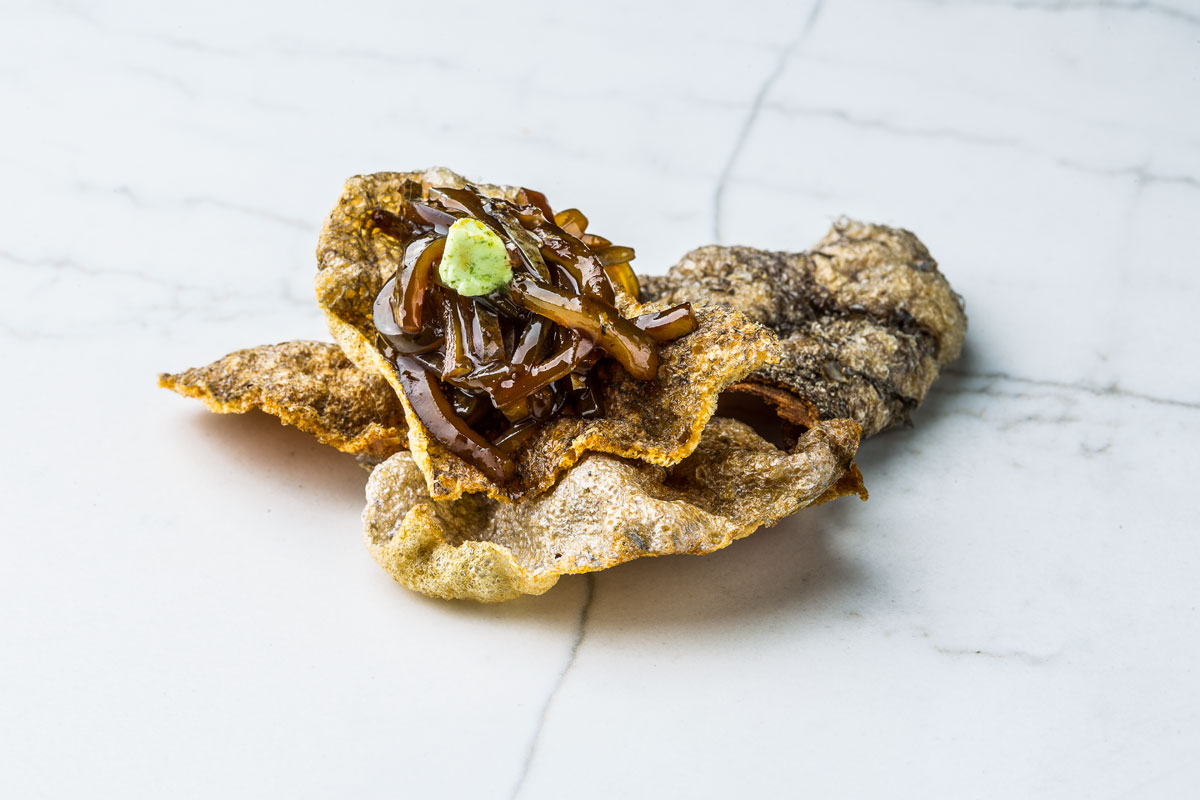
Pablo also told me that Juanlu –the chef of Cocina y Alma, leading exponent of Jerez’s more Parisian spirit– taught him how to cook the skin at a kind of chefs’ festive weekend summit with their families. Nor must we overlook Julián Mármol, ensconced in his bunker at Yugo. Down in his lair he experiments with tuna skin, along with plenty else, like an alchemist immersed in inspired ventures. Much more than just skin deep…
